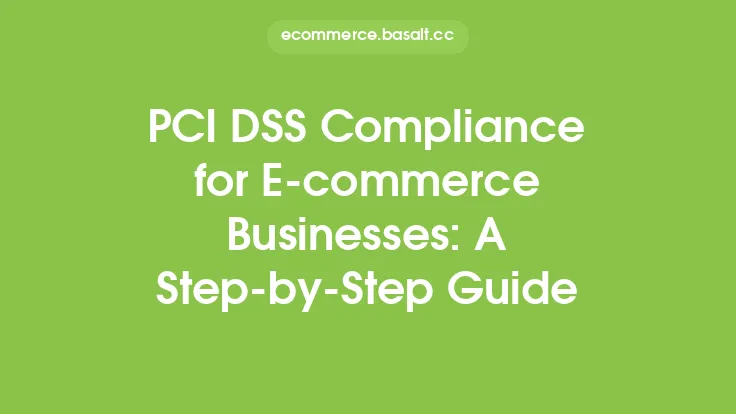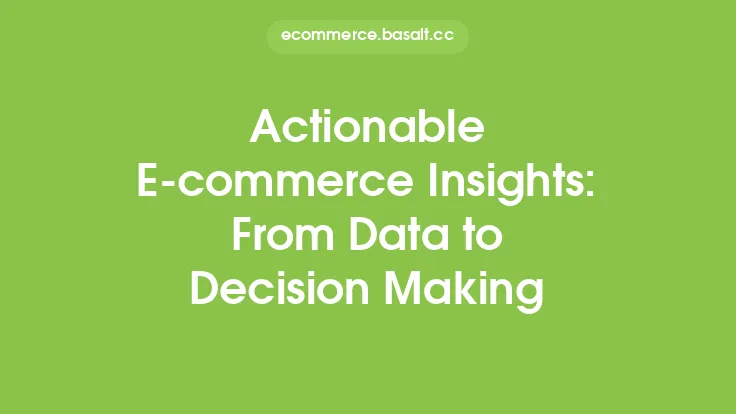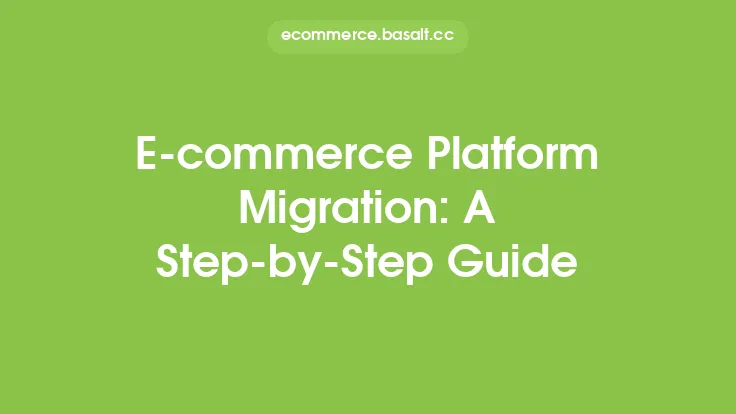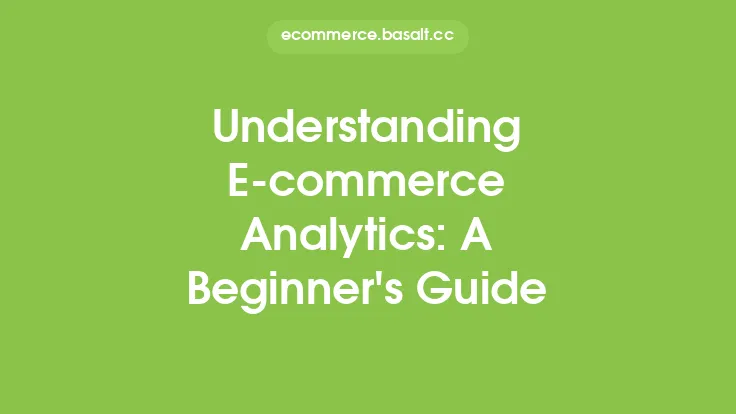To gain a competitive edge in the e-commerce landscape, businesses must be able to extract actionable insights from their data. This involves analyzing various metrics and performance indicators to understand customer behavior, preferences, and pain points. By doing so, e-commerce companies can make informed decisions to optimize their operations, improve customer experience, and drive business growth. In this article, we will delve into the world of e-commerce data analysis and provide a step-by-step guide on how to derive actionable insights from it.
Understanding E-commerce Data
E-commerce data encompasses a wide range of information, including customer demographics, browsing history, purchase behavior, and feedback. This data can be categorized into two main types: quantitative and qualitative. Quantitative data includes numerical values such as sales revenue, website traffic, and conversion rates, while qualitative data comprises non-numerical information like customer reviews, ratings, and social media comments. To extract actionable insights, it is essential to collect, store, and analyze both types of data effectively.
Collecting and Storing E-commerce Data
The first step in extracting actionable insights from e-commerce data is to collect and store it efficiently. This can be achieved through various tools and technologies, such as web analytics software, customer relationship management (CRM) systems, and data management platforms. These tools help to track website interactions, customer behavior, and sales data, providing a comprehensive view of the e-commerce ecosystem. It is crucial to ensure that the data collected is accurate, complete, and up-to-date, as this will directly impact the quality of insights derived from it.
Analyzing E-commerce Data
Once the data is collected and stored, the next step is to analyze it to identify trends, patterns, and correlations. This involves using various statistical and analytical techniques, such as regression analysis, clustering, and decision trees, to uncover hidden insights. E-commerce companies can use tools like Google Analytics, Excel, or specialized data analytics software to analyze their data. It is essential to focus on key performance indicators (KPIs) like conversion rates, average order value, and customer lifetime value, as these metrics provide valuable insights into customer behavior and business performance.
Identifying Actionable Insights
After analyzing the e-commerce data, the next step is to identify actionable insights that can inform business decisions. This involves evaluating the data to determine which metrics are most relevant to the business and which areas require improvement. For instance, if the data reveals a high cart abandonment rate, the e-commerce company may need to optimize its checkout process or offer incentives to complete the purchase. Similarly, if the data shows a low average order value, the company may need to implement strategies to increase sales, such as offering discounts or bundling products.
Implementing Changes and Measuring Results
Once actionable insights have been identified, the next step is to implement changes to the e-commerce strategy. This may involve optimizing website design, improving product recommendations, or enhancing customer service. It is essential to measure the results of these changes to determine their effectiveness and make further adjustments as needed. This involves tracking key metrics and KPIs to evaluate the impact of the changes on business performance. By continuously monitoring and analyzing e-commerce data, businesses can refine their strategies and make data-driven decisions to drive growth and improvement.
Best Practices for E-commerce Data Analysis
To extract actionable insights from e-commerce data, businesses should follow best practices like data quality management, data visualization, and segmentation. Data quality management involves ensuring that the data collected is accurate, complete, and consistent, while data visualization involves presenting complex data in a clear and concise manner. Segmentation involves dividing the customer base into distinct groups based on demographics, behavior, or preferences, allowing businesses to tailor their marketing strategies and improve customer experience.
Common Challenges in E-commerce Data Analysis
E-commerce data analysis can be challenging, especially for businesses with limited resources or expertise. Common challenges include data overload, lack of standardization, and difficulty in measuring ROI. Data overload occurs when businesses collect too much data, making it difficult to extract meaningful insights. Lack of standardization can make it challenging to compare data across different channels or platforms, while difficulty in measuring ROI can make it hard to evaluate the effectiveness of e-commerce strategies. To overcome these challenges, businesses should focus on collecting relevant data, standardizing their metrics, and using tools and technologies that simplify data analysis.
Future of E-commerce Data Analysis
The future of e-commerce data analysis is exciting, with emerging technologies like artificial intelligence (AI), machine learning (ML), and the Internet of Things (IoT) set to revolutionize the way businesses collect, analyze, and act on their data. AI and ML can help automate data analysis, identify patterns, and predict customer behavior, while IoT can provide real-time data on customer interactions and preferences. As e-commerce continues to evolve, businesses must stay ahead of the curve by adopting these technologies and using them to extract actionable insights from their data.
Conclusion
Extracting actionable insights from e-commerce data is crucial for businesses to stay competitive in the digital landscape. By collecting and storing data effectively, analyzing it to identify trends and patterns, and implementing changes based on actionable insights, e-commerce companies can optimize their operations, improve customer experience, and drive business growth. As the e-commerce landscape continues to evolve, businesses must stay focused on using data to inform their strategies and make data-driven decisions to achieve success.




